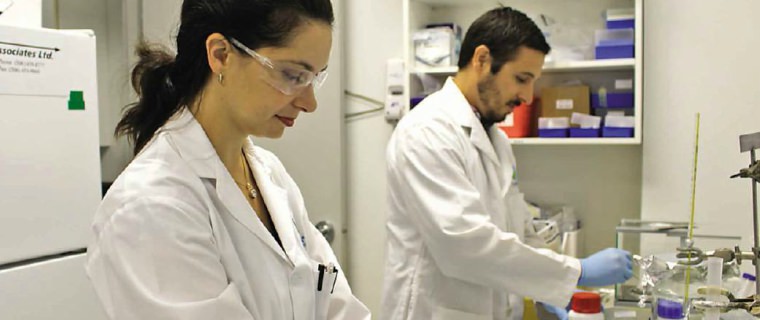Individual retail gasoline outlets can potentially increase annual revenues by as much as $30,000 per year through a more pro-active microbiological testing program using LuminUltra’s Quench-Gone Organic Modified (QGO-M) test kit. Uncontrolled microbiological growth in fuel systems is one of the main contributors to filter plugging (Passman, 2001). If the microbiological population in Underground Storage Tanks (UST) is routinely monitored and controlled, dispenser flow rates can be maximized.
On average, a clean filter allows a maximum dispenser flow rate of 10 USgpm. However, retail gasoline outlets typically operate at a dispenser flow rate of 7-9 USgpm, and most filters are replaced only once the flow rate is less than 5 USgpm (Passman, 1994). The reduction in dispenser flow rate from blocked filters limits the volume of fuel that can be dispensed during peak business hours, thus decreasing the revenue that can be generated during peak hours.
To illustrate this point, consider the model case study below for a retail outlet with the following assumptions:
- 10,000 USgal of fuel dispensed per day;
- 4 peak hours of business per day, during which approximately 6000 gallons is dispensed;
- Maximum dispenser flow rate = 10 gallons per minute (USgpm);
- Fuel price, $3.20/gallon;
- Testing Equipment Investment = $6000
- Annual Monitoring and Remedial Action costs, $2,600 (testing services, biocide addition, and tank cleaning).
A retail outlet with a 10% reduction in dispenser flow rate therefore has an opportunity cost of $1920 per day (6000 USgal x 10% x $3.20/gal). At this reduced rate, it takes less than five days (18 hours of peak business) to cover the initial equipment investment as well as the costs of a monitoring and treatment to control microbial growth. Beyond the first year once the equipment cost has been covered, the annual monitoring and treatment costs are recovered in less than two days. High dispenser flow rates enable the retail gasoline outlet to be more competitive during peak business hours and not lose customers to another line at a different outlet.
A major secondary benefit of this program is a significantly reduced threat of microbial-influenced corrosion (MIC) in fuel storage tanks. If uncontrolled, microbial proliferation in storage tank bottom water can rapidly accelerate corrosion of the tank which can often lead to perforation and possibly fracturing of the tank. Since the replacement cost of a fuel storage tank can approach $500,000, it is certainly in the best interest of all those involved to make sure that tank integrity is maintained for as long as possible.
References:
Passman, F.J. 1994. Uncontrolled microbes eat earnings. National Petroleum News 86(9):56.
Passman, F. J. 2001. “Microbially Influenced Corrosion and Filter Plugging – Don’t you wish they were easy to diagnose”. Proceedings of the 4th International Filtration Conference, G. Bessey Ed., Southwest Research Institute, San Antonio.









